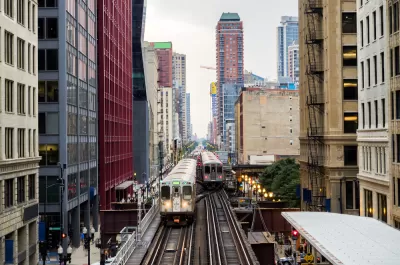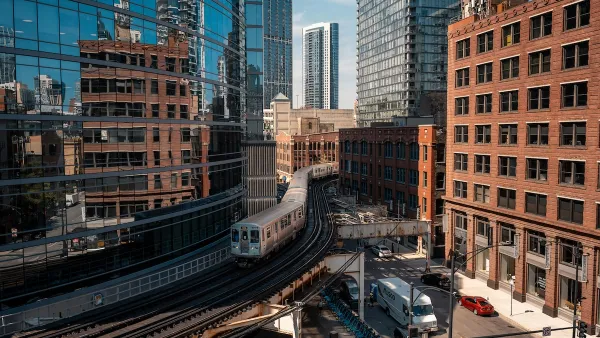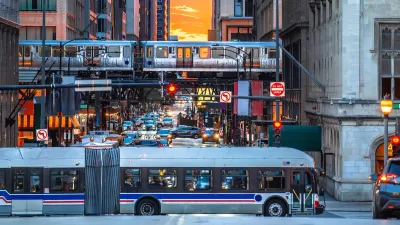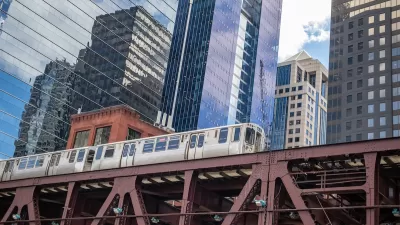A new scorecard from the Chicago Transit Authority will update the public on the agency’s progress on key issues like service delivery, frequency, and infrastructure improvements.

A new scorecard from the Chicago Transit Authority seeks to provide more effective communication to the public about the agency’s progress in achieving the COVID recovery goals set by the Meeting the Moment action plan. As John Greenfield explains in Streetsblog Chicago, “Released in August, the document set targets for providing reliable service, reducing crime, better cleaning protocols, rolling out new amenities, better customer engagement, and more complete staffing.”
The scorecard includes the percentage of service delivered, the percentage of gaps over 15 minutes and double the scheduled interval, as well as progress in hiring, progress in the installation of tactile bus stops to assist riders with visual impairments, station upgrades, and citations issued.
“The scorecard also includes a bus and rail ridership graph. While the system recently reached a new pandemic-era high of an average of about 900,000 trips per weekday, that’s only 64 percent of the pre-COVID norm of 1.4 million rides per weekday.” According to Greenfield, “The CTA has a long way to go in order to rebuild ridership to pre-pandemic levels, which will require restoring rider trust that transit commutes will be safe, predictable, efficient, and sanitary.” The scorecard is one way to boost the agency’s accountability and transparency.
FULL STORY: CTA launches Meeting the Moment scorecards to track progress on pandemic recovery

Planetizen Federal Action Tracker
A weekly monitor of how Trump’s orders and actions are impacting planners and planning in America.

Congressman Proposes Bill to Rename DC Metro “Trump Train”
The Make Autorail Great Again Act would withhold federal funding to the system until the Washington Metropolitan Area Transit Authority (WMATA), rebrands as the Washington Metropolitan Authority for Greater Access (WMAGA).

DARTSpace Platform Streamlines Dallas TOD Application Process
The Dallas transit agency hopes a shorter permitting timeline will boost transit-oriented development around rail stations.

Renters Now Outnumber Homeowners in Over 200 US Suburbs
High housing costs in city centers and the new-found flexibility offered by remote work are pushing more renters to suburban areas.

The Tiny, Adorable $7,000 Car Turning Japan Onto EVs
The single seat Mibot charges from a regular plug as quickly as an iPad, and is about half the price of an average EV.

Supreme Court Ruling in Pipeline Case Guts Federal Environmental Law
The decision limits the scope of a federal law that mandates extensive environmental impact reviews of energy, infrastructure, and transportation projects.
Urban Design for Planners 1: Software Tools
This six-course series explores essential urban design concepts using open source software and equips planners with the tools they need to participate fully in the urban design process.
Planning for Universal Design
Learn the tools for implementing Universal Design in planning regulations.
Municipality of Princeton
Roanoke Valley-Alleghany Regional Commission
City of Mt Shasta
City of Camden Redevelopment Agency
City of Astoria
Transportation Research & Education Center (TREC) at Portland State University
US High Speed Rail Association
City of Camden Redevelopment Agency
Municipality of Princeton (NJ)





























